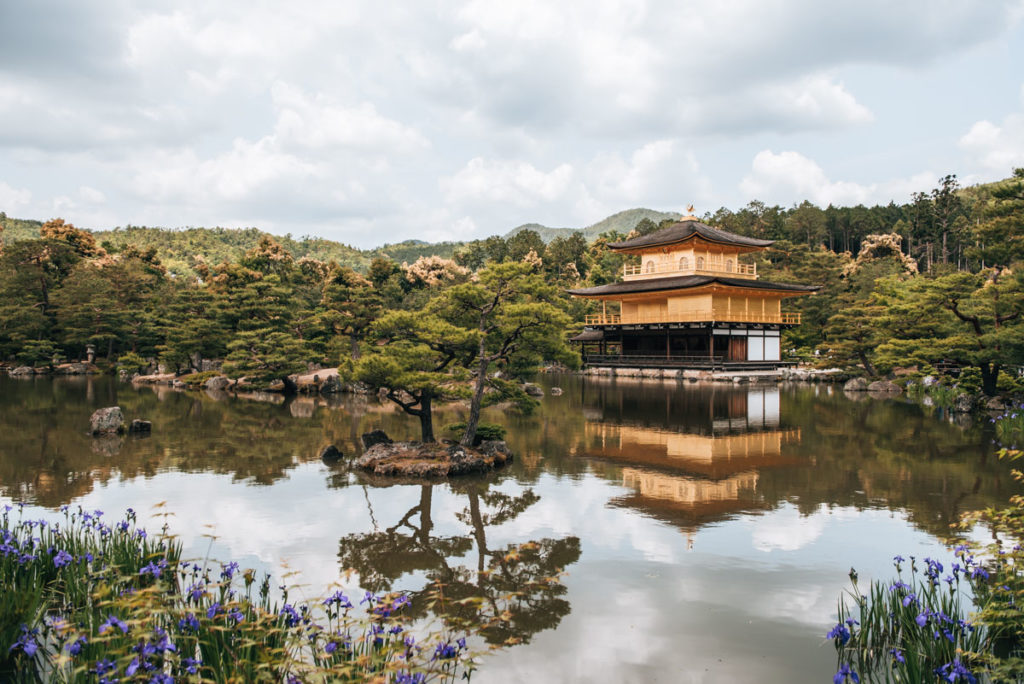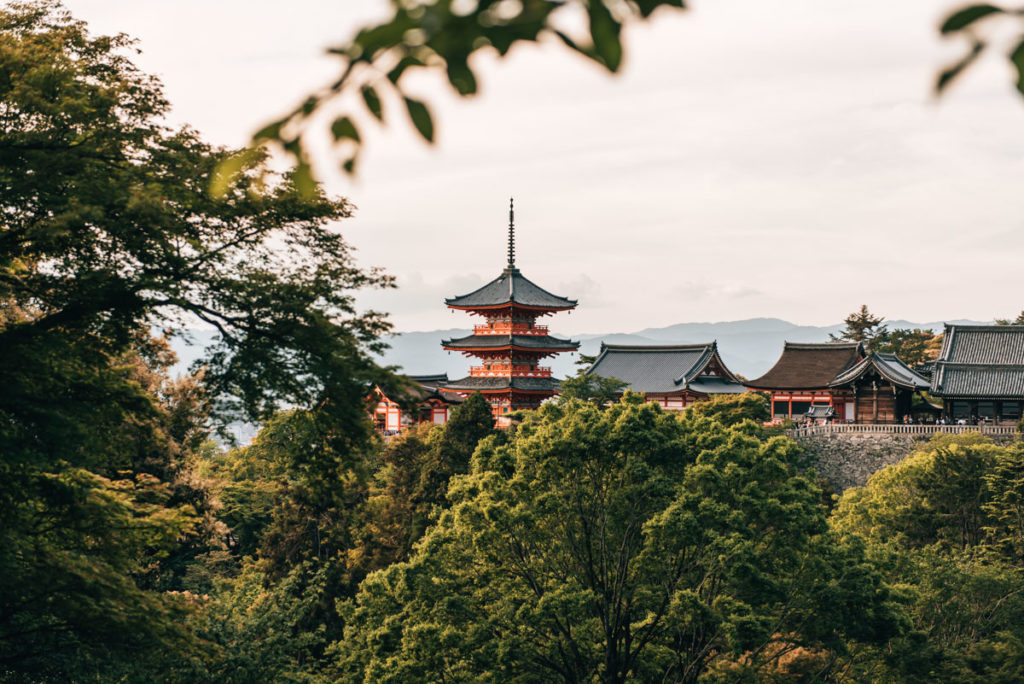Docile deer roaming around impressive temples and shrines – it’s this combination that makes Nara so unique and special. Once upon a time, Nara was actually the capital of Japan, which explains why the city centre is still home to an abundance of beautiful temples and shrines.
How and where exactly do the deers fit into all this, you ask? Simple: they live here, and have done so for centuries. You’ll find these curious creatures keeping you good company while sightseeing in Nara. If you’re looking for a day trip from Osaka or Kyoto, then Nara is the perfect destination. In this blog article, we will share with you our best tips for Nara.
Inhalt
1. Nara: What to expect from the City of Temples?
Nara is usually always one of the highlights of a Japan Trip. Similar to Kyoto, Nara also has countless temples and shrines in a relatively small city. You can really immerse yourself in historical side of Japan and that’s what makes a visit to Nara so exciting.
Apart from the temples and shrines, we found the traditional Japanese gardens in Nara also particularly worth seeing. These Japanese gardens bring together all the possible clichés: symmetrically cut trees, paths through moss and a pretty tea house in the centre.
Nara is just a stone’s throw away from Kyoto and Osaka. In case of doubt, we would probably recommend that you do the day trip from Osaka, which is what we did. This is mainly because in Kyoto, there are already so many temples to see. There is more contrast between Nara and modern Osaka.
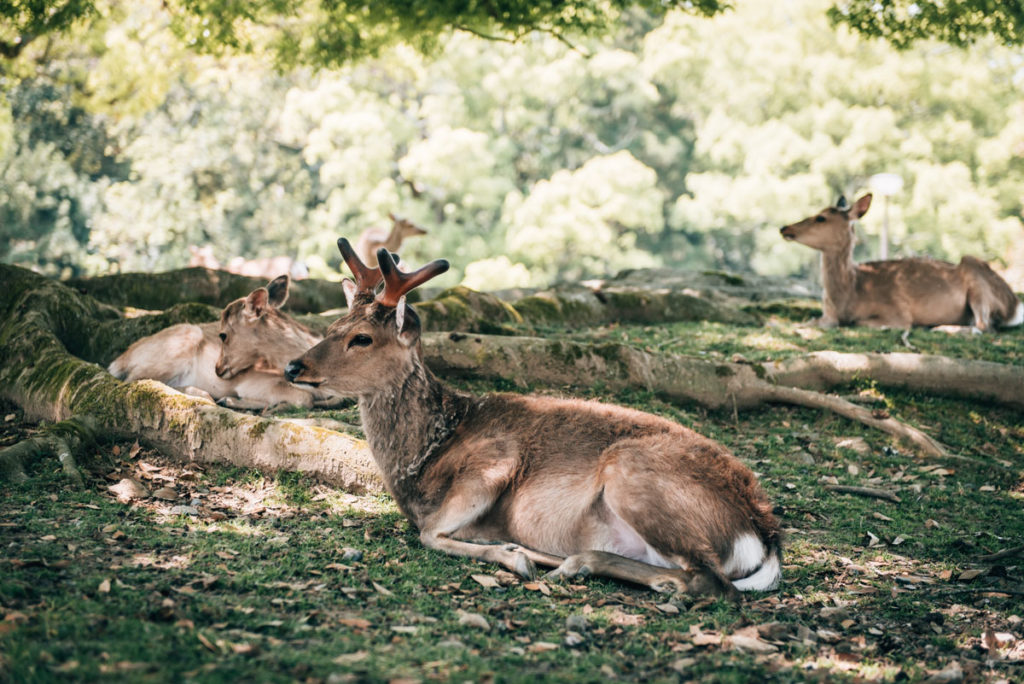
How do I get around in Nara?
Most of the temples and shrines in Nara are within walking distance of each other. You can basically walk everywhere – that’s what we did (except for the last walk back to the train station). We were pretty tired so we decided to just take a taxi. As a rough estimate: We covered about 15 kilometres on foot throughout the day in Nara.
Alternatively, the bus network is quite well developed in Nara: There are several bus lines, and for tourist purposes the Yellow Bus Lines 1 and 2 are the most used. These lines go around in a circle and stop at the main attractions (Bus Line 2 goes clockwise; Line 1 goes counterclockwise).
A day ticket for all bus lines will cost about 500 Yen. This is best bought directly after your arrival at the station in Nara. If you just want to travel one way by bus, then you can also buy your ticket directly on the bus (single trip: 210 Yen).
2. The Most Beautiful Temples, Shrines and Gardens in Nara
In this chapter, we’ll share with you which temples, shrines, and gardens we visited in Nara on our one day trip. We’ve listed the locations in the order of how we explore the city, so that you can better orient yourself.
Deers in Nara Park
Although the Nara Park is actually a huge area encompassing some of the city’s main attractions, we would still like to talk about it separately. Amongst the many green areas of the Nara Park, you will no doubt come across roaming deer, which Nara happens to be so well-known for.
The deer either gather in groups, making themselves comfortable under the shade of the trees, or they are looking for something to eat. Of course, the deer now know that visitors mean food, and you can even buy animal feed at the park entrances. Note: The deer are very, very friendly. As soon as they smell the crackers, they will stalk you until you feed them.
As a side note: You will come across free roaming deer in almost all the places we are about to mention below – with the exception of the gardens. They are everywhere and very much a part of the Nara cityscape.
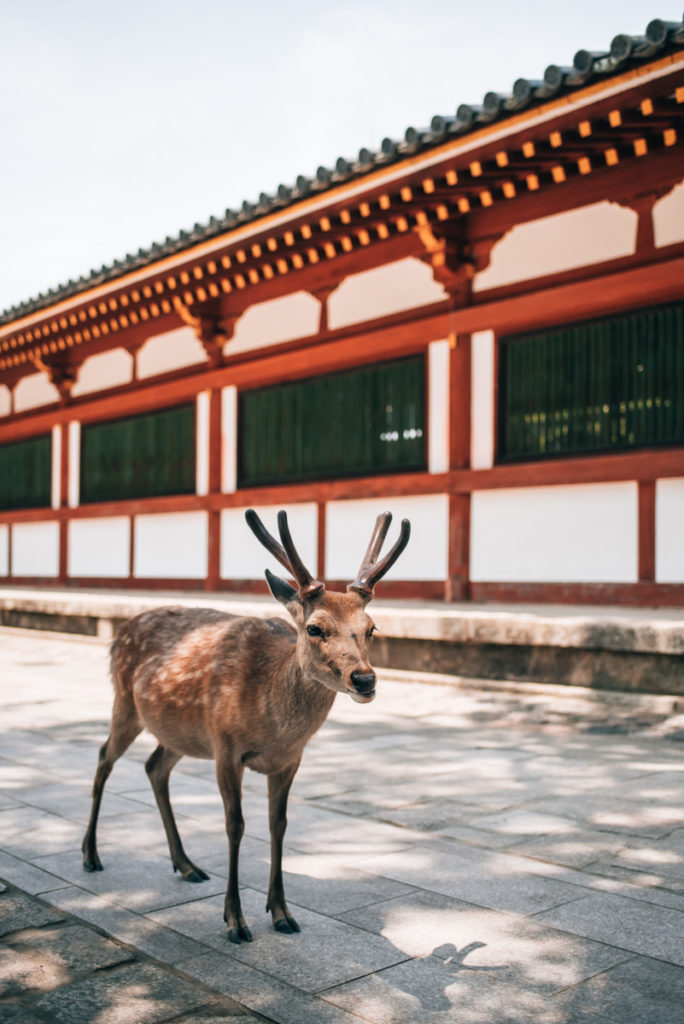
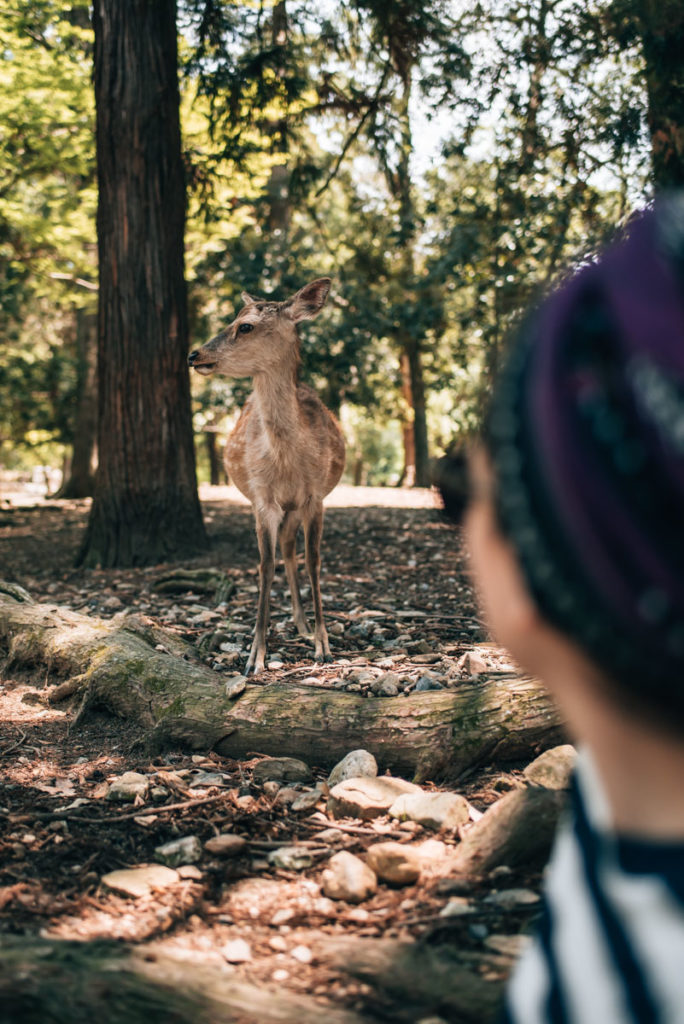
Tōdai-ji Temple
The most famous temple in the whole of Nara, and most definitely worth a visit, is the Tōdai-ji Temple. What makes this temple so unique is that it’s completely built from wood. In fact, the Tōdai-ji Temple is actually the largest wooden building in the world. How crazy is that?
Precisely because of this claim to fame, you can be sure to find huge crowds at the Tōdai-ji Temple. School classes, travel groups, etc… if you’re after temples with peace and quiet, then this is perhaps not the best place. However, you should not skip a visit to this temple because the building itself really is quite spectacular.
Inside the Tōdai-ji temple is a 15 metre high Buddha, which is also very impressive. All in all, the area can be covered rather quickly.
Information about visiting the Tōdai-ji temple
Opening Hours: 7:30 am to 5:30 pm
Admission: 1,000 Yen
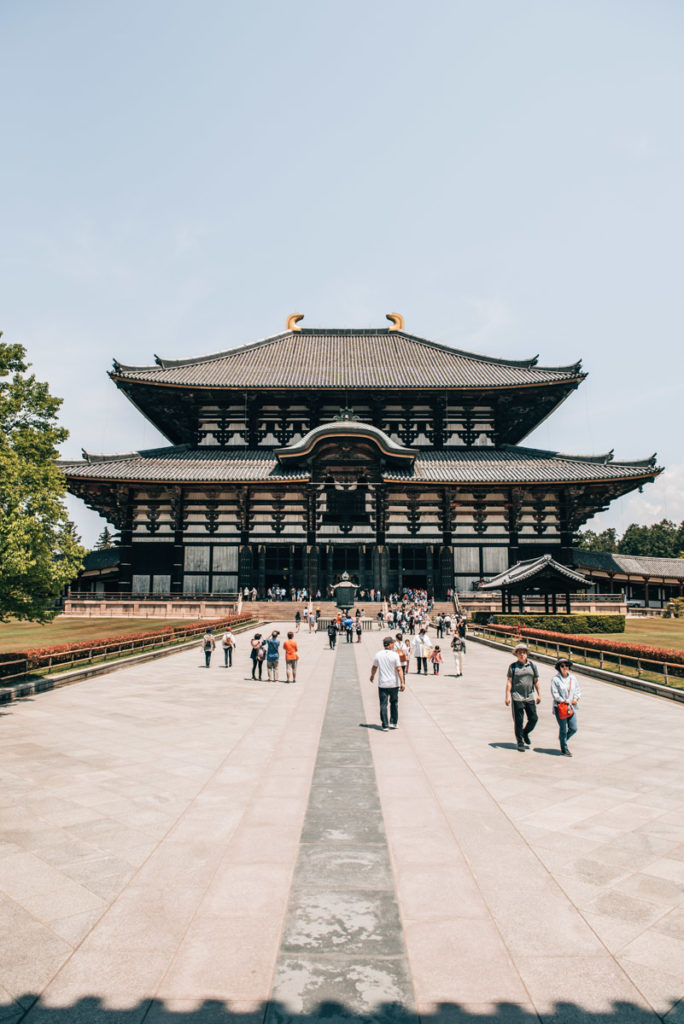
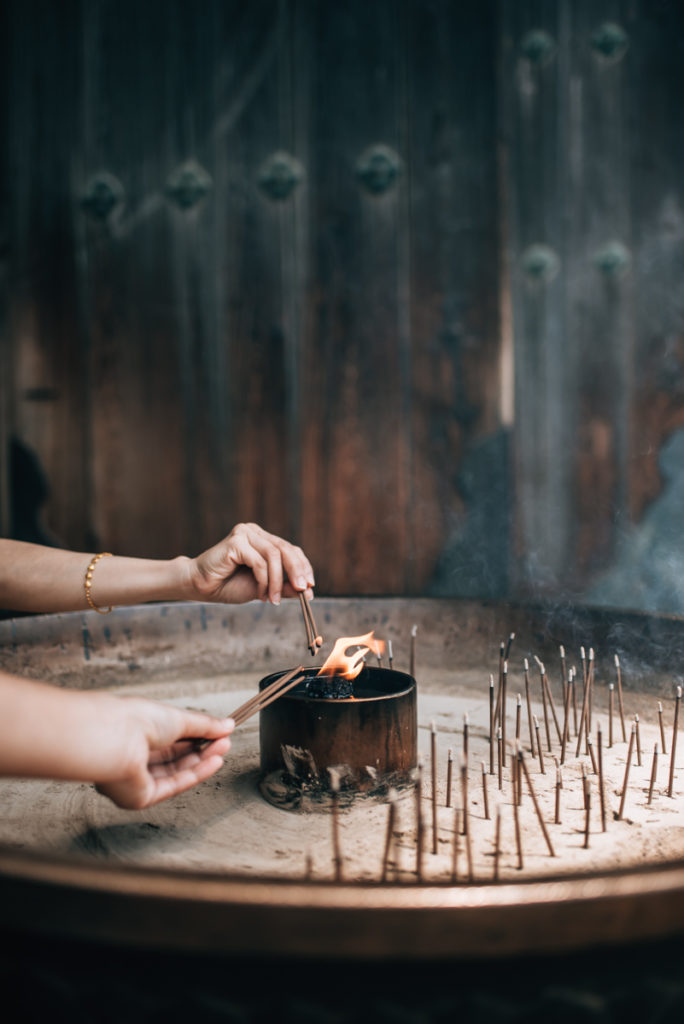
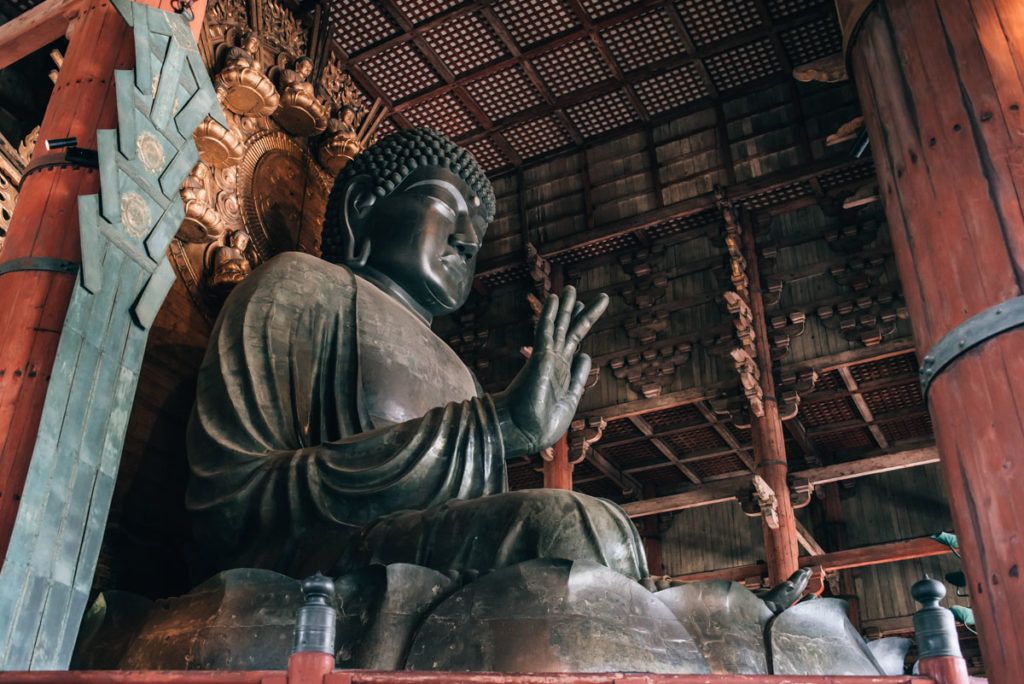
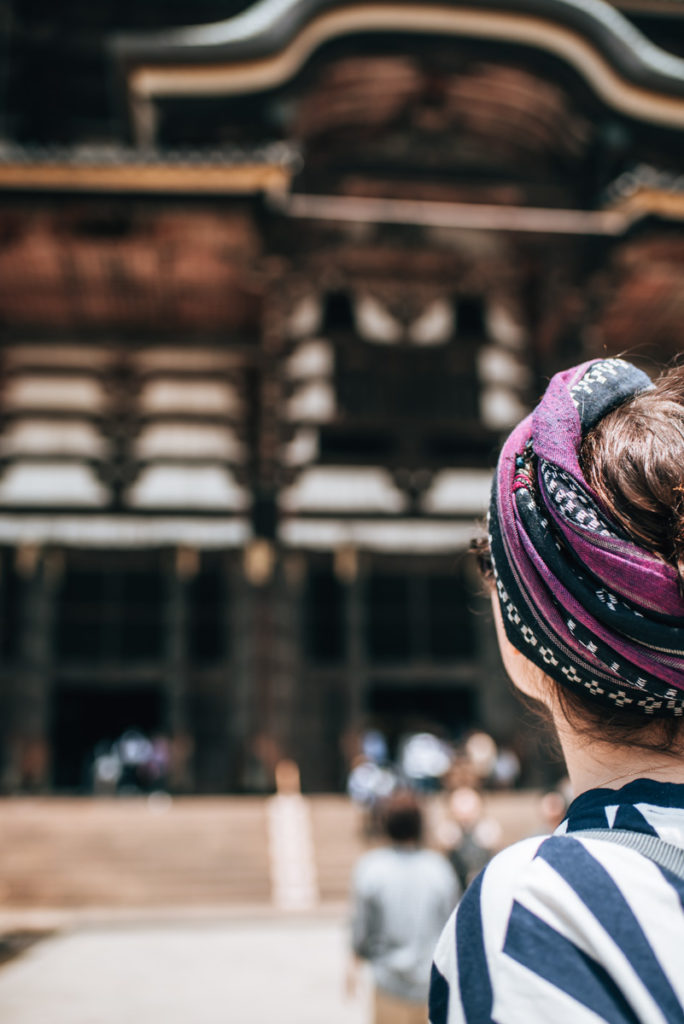
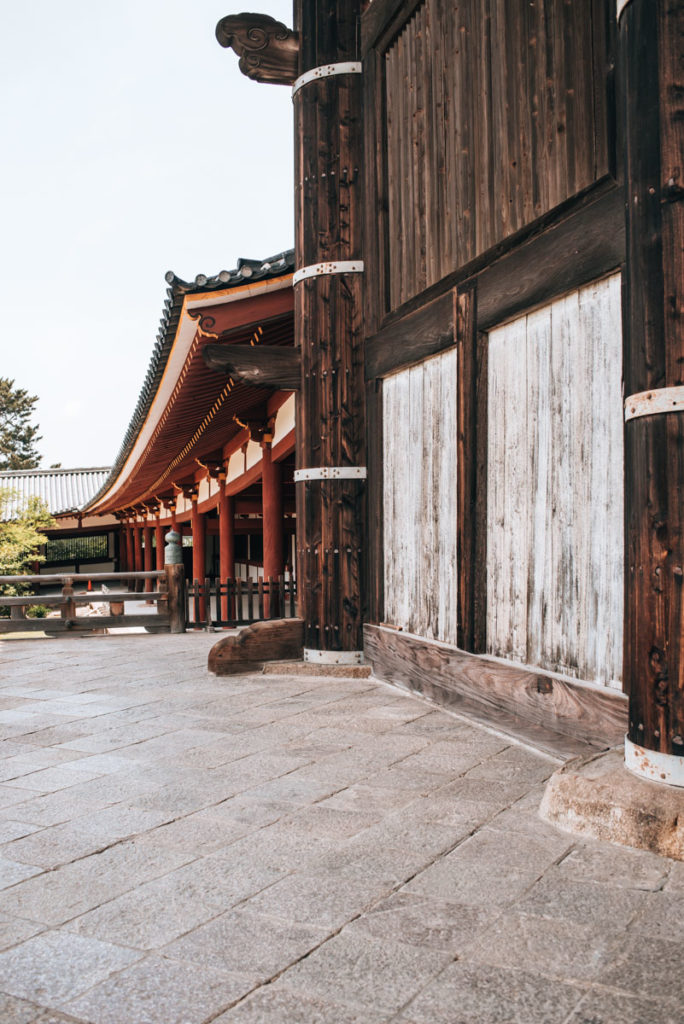
Isuien Garden
Probably the most famous Japanese garden in Nara is the Isuien Garden. Any preconceptions you may have about Japanese gardens become reality here: with trails through the moss, paths over a river, a lake that reflects the surrounding plants and a tea house to enjoy your matcha.
Contrary to our expectations, the garden was pleasantly uncrowded, which meant we could enjoy the garden in peace.
The ticket also includes a visit to the associated museum. But we decided that it was more worthwhile spending this time wandering the neighbouring garden instead – more about that below.
Information about visiting the Isuien Garden
Admission: 900 Yen
Opening Hours: 9:30 am to 5 pm
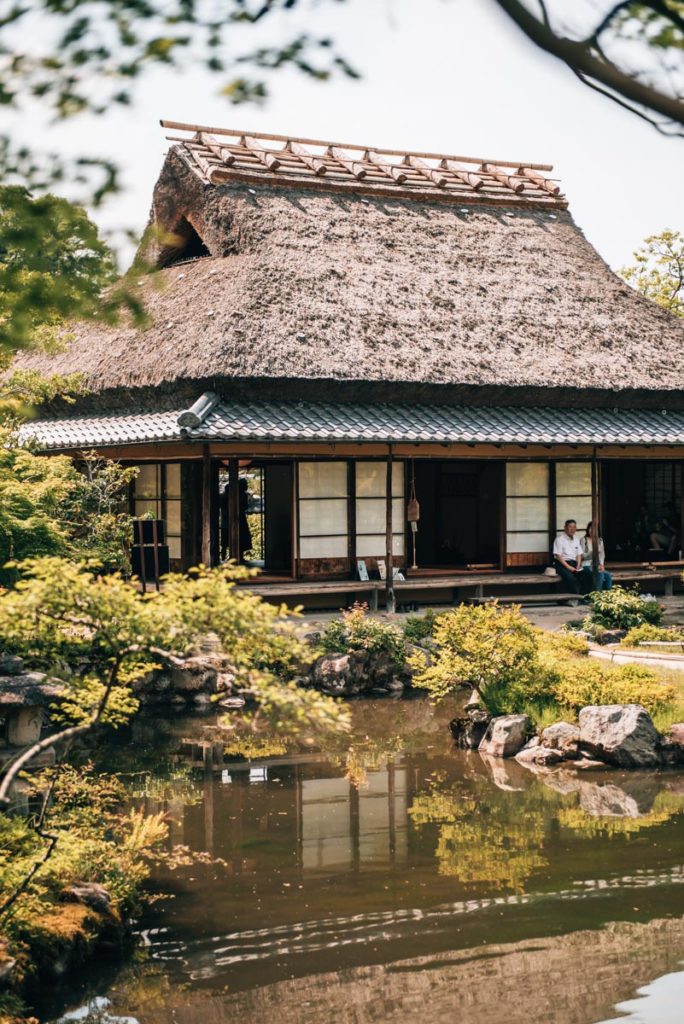
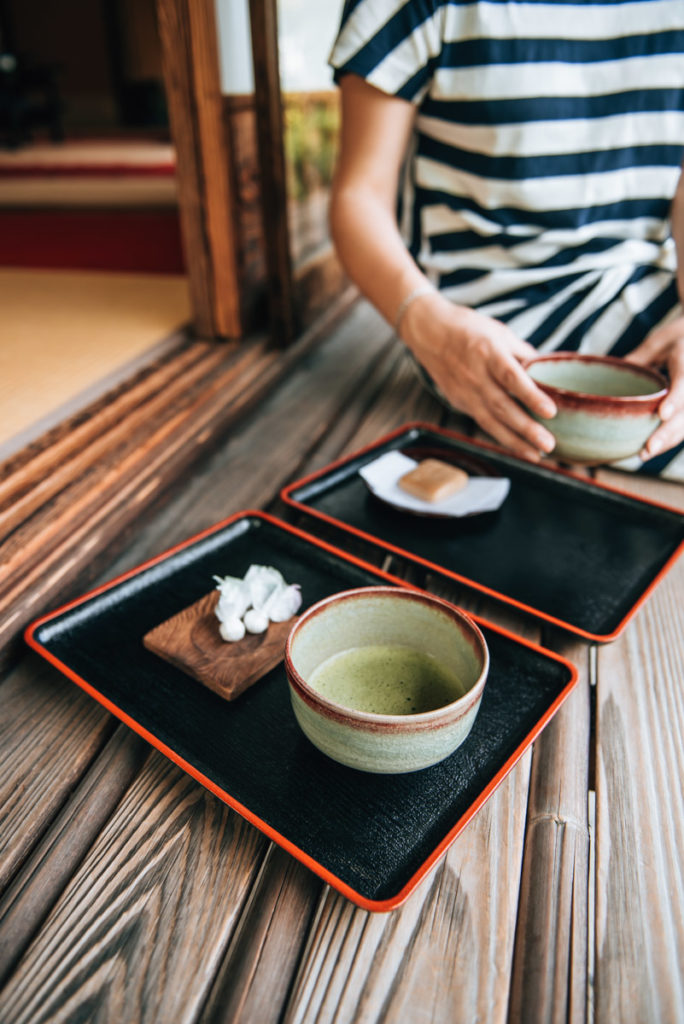

Yoshikien Garden
Right next to the entrance of the Isuien Garden, you will find another entrance to the lesser-known Yoshikien Garden. Since we were already there anyway, we thought why not pay a visit to both gardens?
The Yoshikien Garden is a bit smaller than the Isuien Garden but in our opinion, just as worthwhile. Here, lies another beautiful Japanese garden awaiting you. The wooden tea house also makes for a great photo spot.
As the entrance is free (upon display of passport) and both gardens are right next to each other, we would recommend you to visit both gardens. Who knows when you’ll get the chance to see these Japanese gardens again?
Information about visiting the Yoshikien Garden
Admission: Free if you show them your passport
Opening Hours: 9am to 5pm
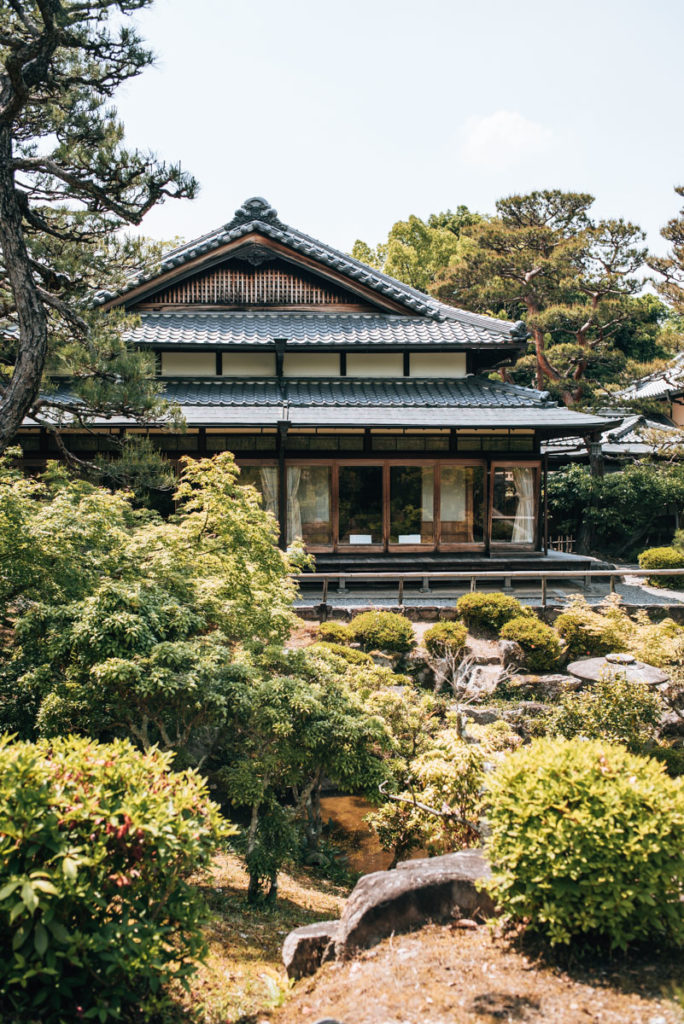
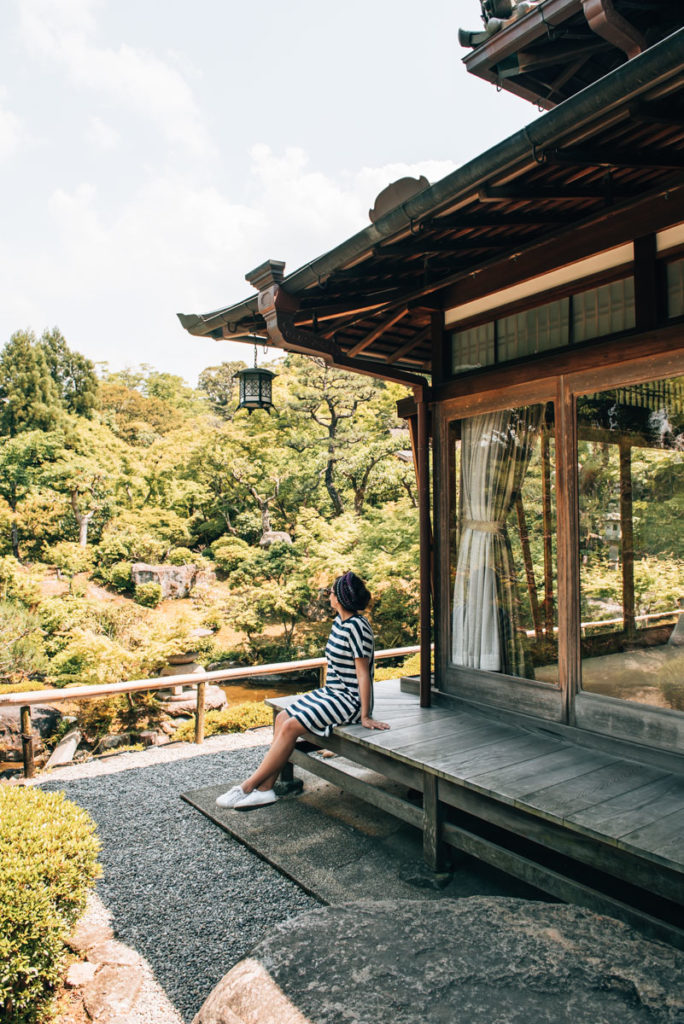
Kasuga-Taisha shrine
Our visit to the Kasuga-Taisha Shrine during the late afternoon was one of our personal highlights in Nara. With hundreds of moss-covered stone lanterns, this shrine is definitely one of the most memorable places on our trip to Japan. The shrine is located nearby the woods, so you’ll find lots of deer here, often peeking out between the stone lanterns.
You can visit the Kasuga-Taisha Shrine for free. However, the inner part of the shrine costs 500 Yen to see several red buildings and even more lanterns. We were pretty lucky because on the day we visited, we were basically the last people to get through. Thus, we had the area almost completely to ourselves to explore. During the day, this area can get very busy apparently.
Therefore, we strongly recommend that you visit the Kasuga-Taisha Shrine in the afternoon as well. (Note: the varying opening times depend on the season. We made it to the ticket office of the Inner Shrine at 4pm). At the end of your visit, we would highly recommend you to walk up to the Nigatsudo Temple to admire the sunset. We’ll tell you more below.
Information about visiting the Kasuga-Taisha Shrine
Opening Hours: Depending on the season, between 6 am (or 6:30 am) and 5 pm or 6 pm. The inner part of the shrine closes earlier.
Admission: Free. But Inner Shrine costs 500 Yen

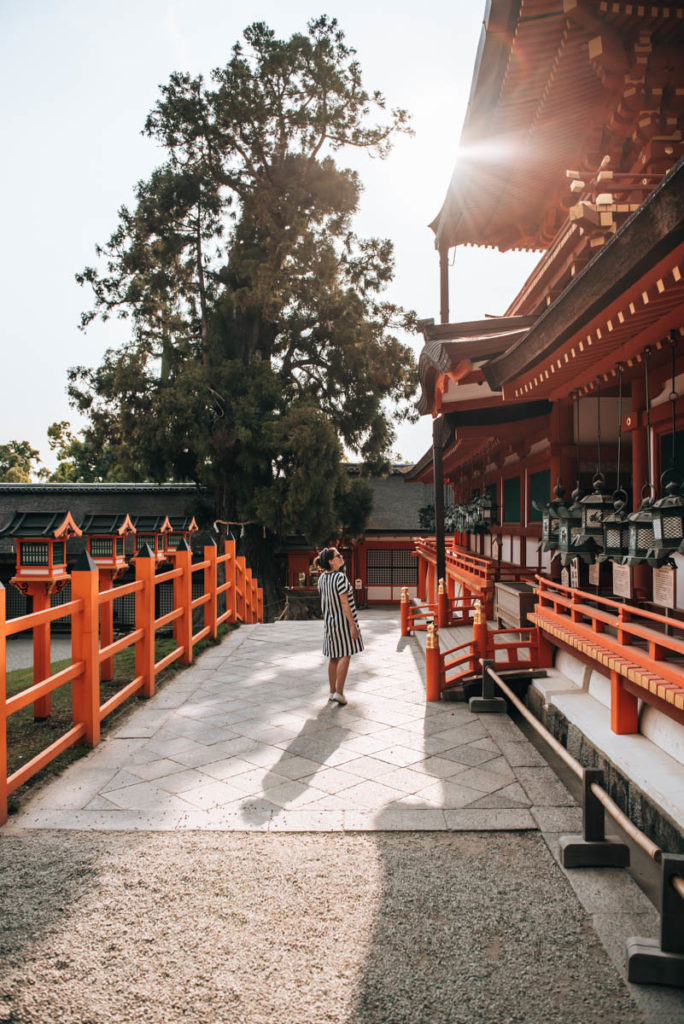
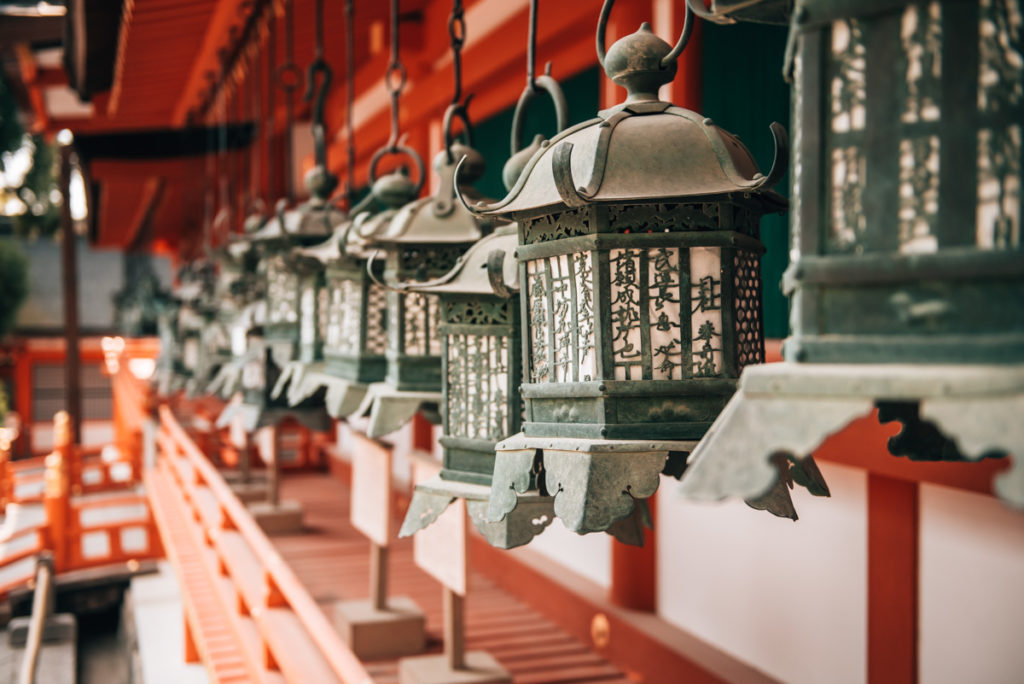
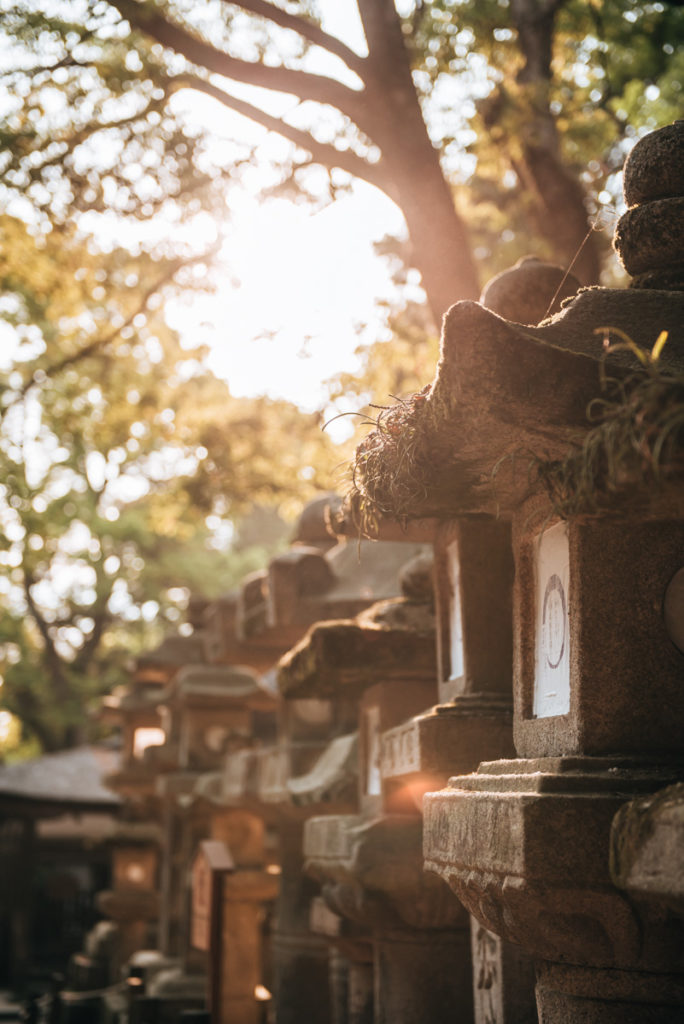
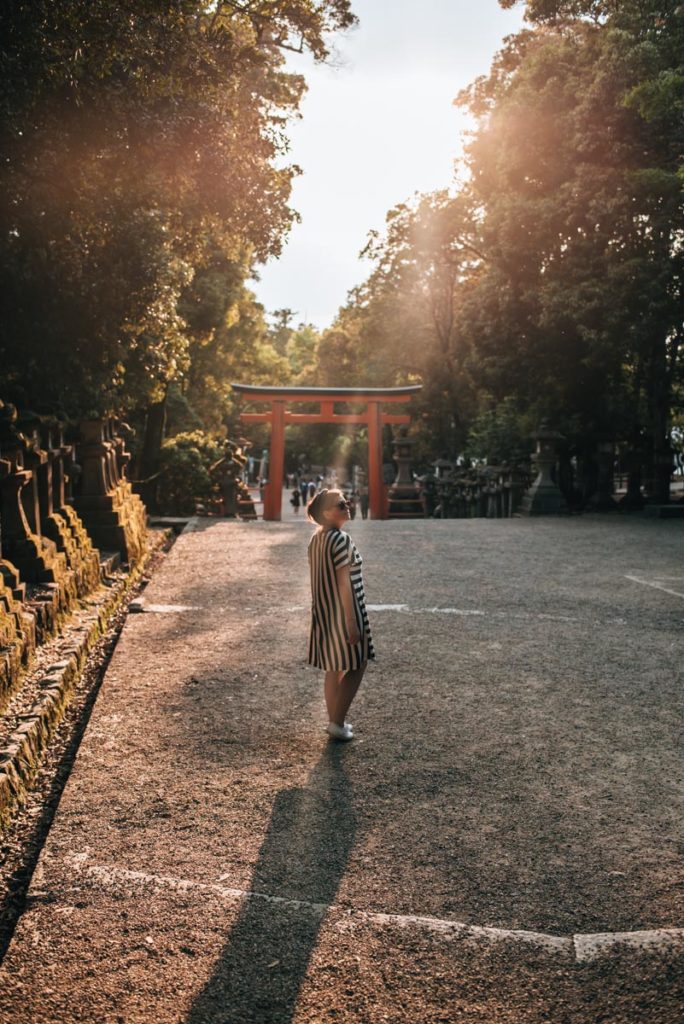
Nigatsu-dō temple
In our opinion, the perfect place to watch the sunset in Nara is the Nigatsu-dō Temple. It’s located on a hill above the Tōdai -ji temple (and is actually an extension of this).
During the day, it’s usually very busy here. But during our sunset visit, there were surprisingly very few people around. Although the temple hall is closed off to visitors, the atmosphere is no less magical. We can highly recommend you do the short walk up here as the view is very much worth it. For us, enjoying sunset at the Nigatsu-dō Temple was the perfect way to end our trip to Nara.
Information about visiting the Nigatsu-dō temple
Admission: Free
Opening Hours: The temple grounds are open 24/7 always. But the main temple hall closes at 5:30 pm
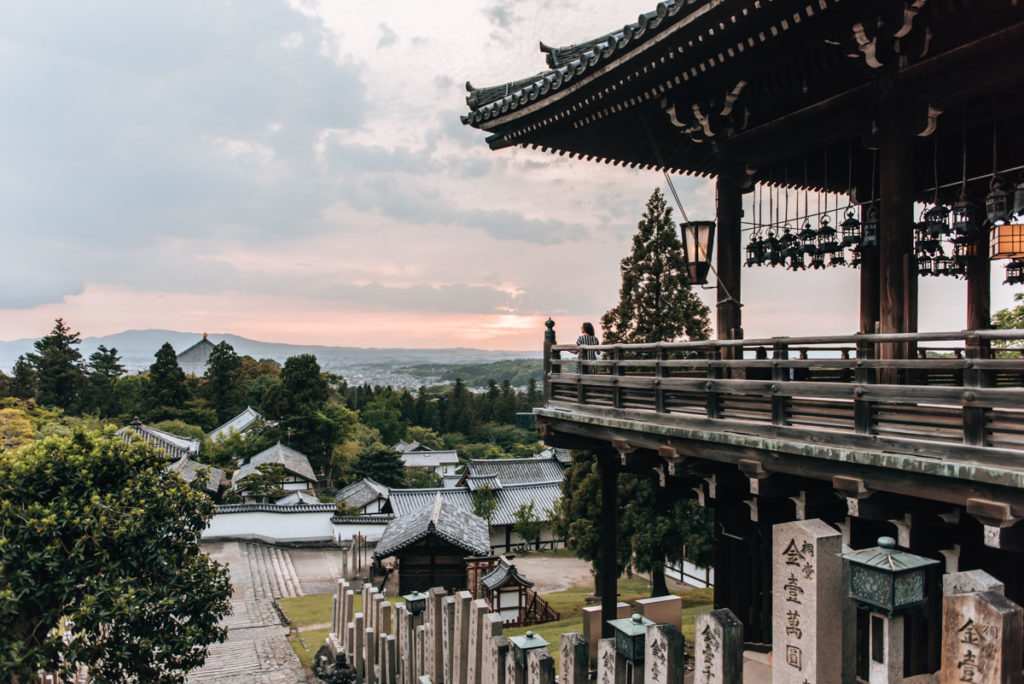
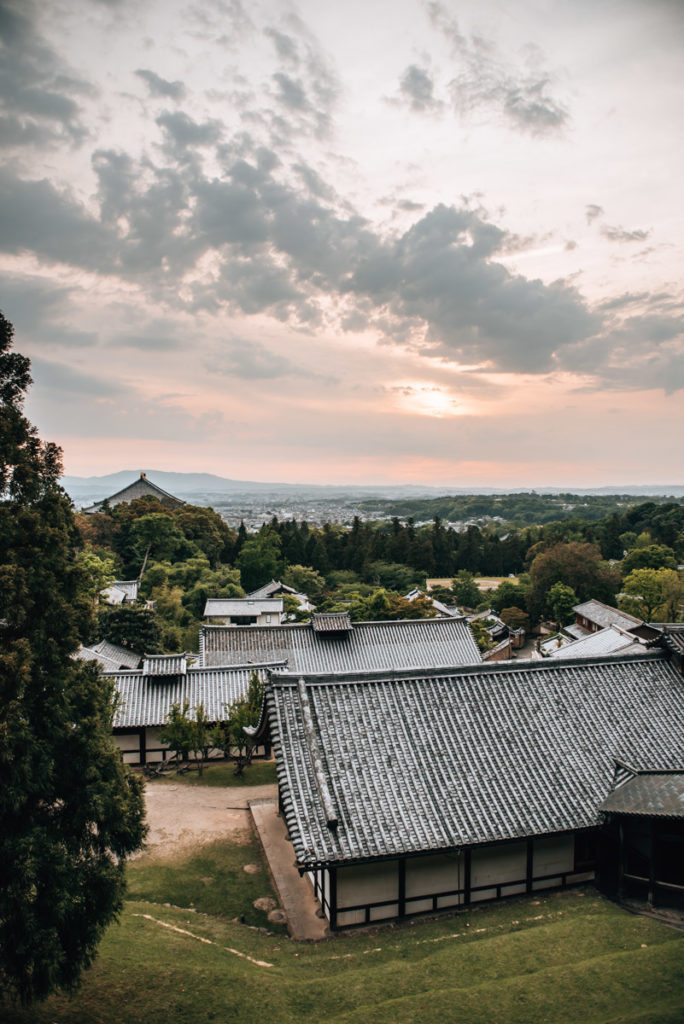
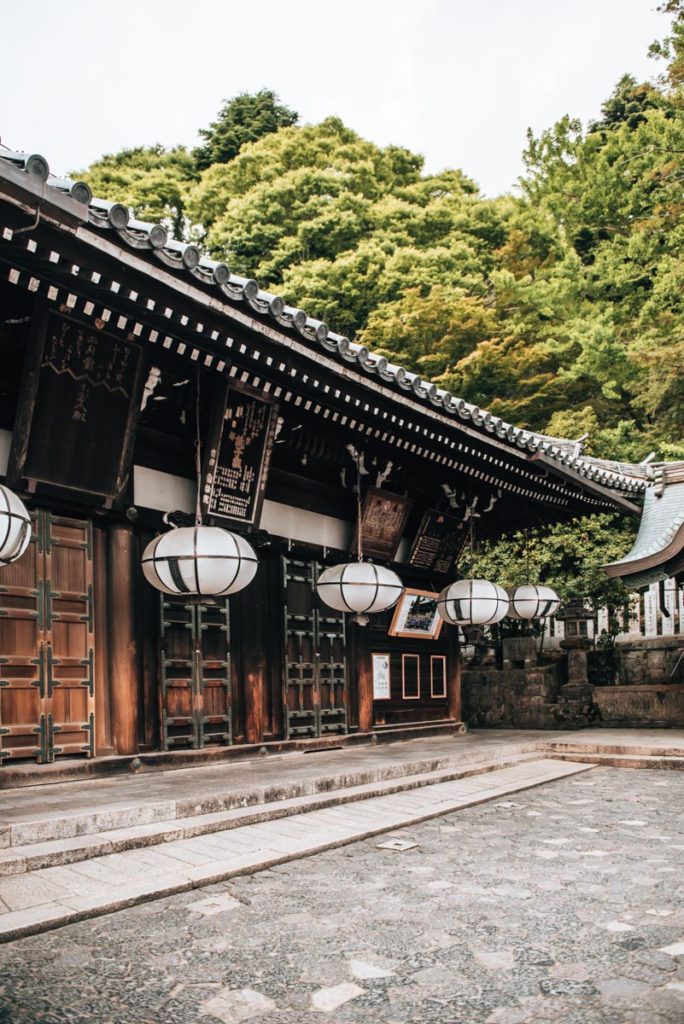
3. Tips for Extra Places Worth Visiting
Mochi Master Nakatanidou
Have you ever tried Mochi? These small, sticky Japanese rice cakes with their strange consistency is often a love or hate relationship at first bite. If you are curious, then Nara is one of the best places to go and try this traditional delicacy: in the city centre is a Mochi Bakery, which is well-known throughout the country – called the Nakatinadou.
Here, you will find the world’s fastest Mochi master working away. What you should know about the process, is that during the preparation phase, the mochi dough is beaten with a hammer – but they do it so crazy fast here that you start to fear for the Mochi master’s fingers.
At Nakatinadou, you can watch the production of the Mochis throughout the day during their opening hours. But to get a glimpse of the main attraction, namely the beating of the Mochi dough, it can take a while.
The shop is quite touristy, of course – but the Mochis taste seriously good. We even got some extra to take away. Note: don’t eat too fast and drink plenty. There have been cases where people choke on Mochis.
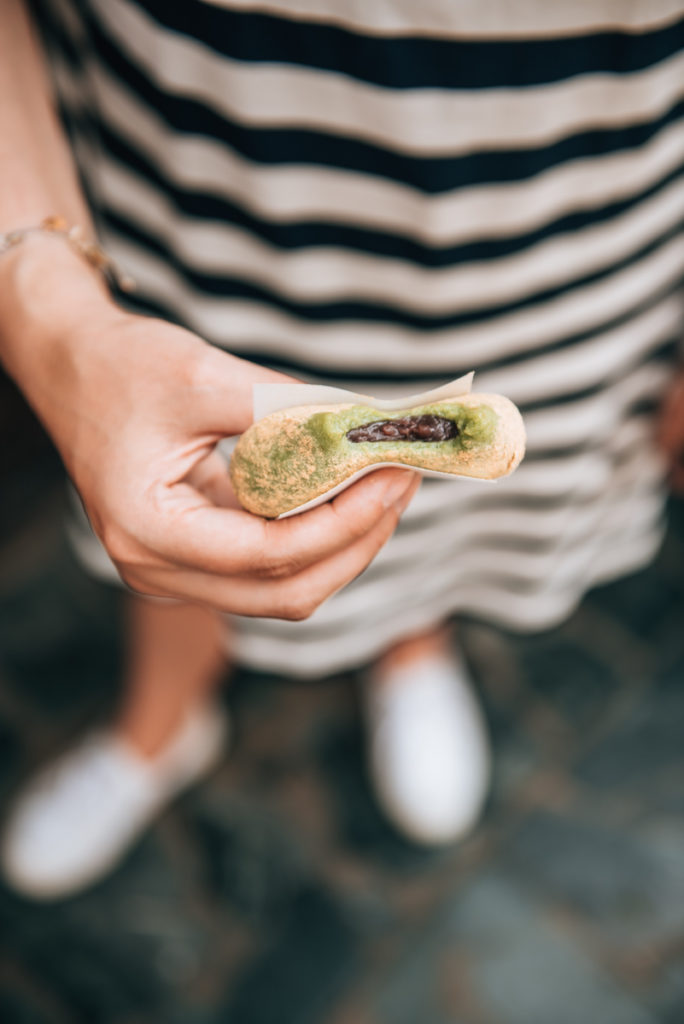
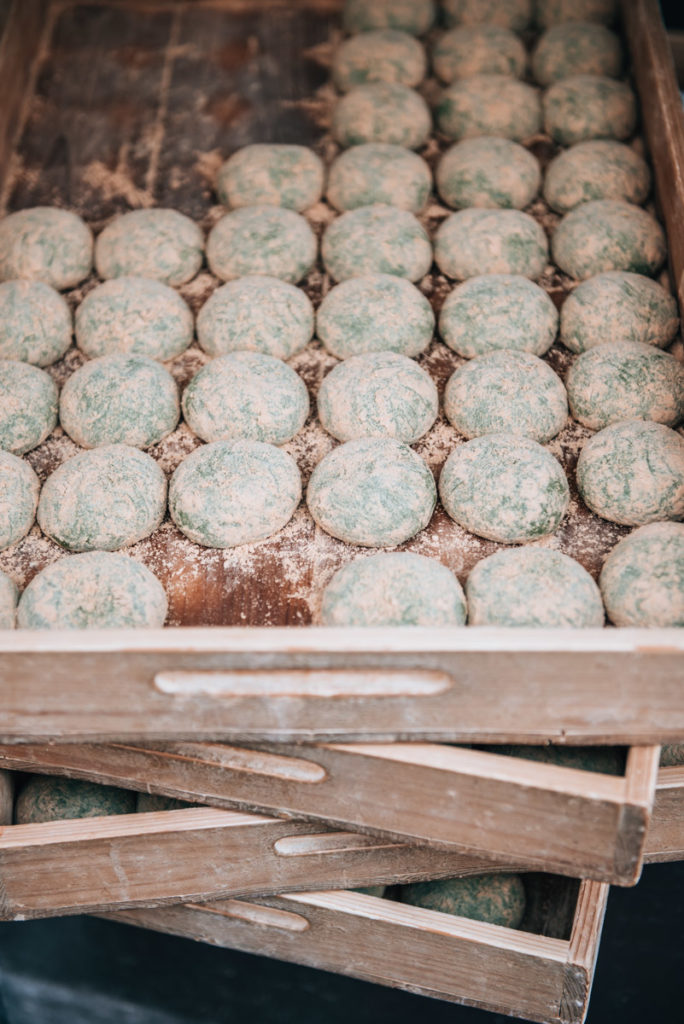
Old Town Nara (= Naramachi)
The former commercial district (called Naramachi), is a bit like the Old Town of Nara. Down the small alleys, one wooden house adjoins the next. Many boutiques, galleries or small shops can also be found in the houses.
We would have imagined Naramachi to be more alive and busier, as it was very quiet during our visit. So if you’ve had enough of the busy bustle in the main city temples, then Naramachi is the place for you.
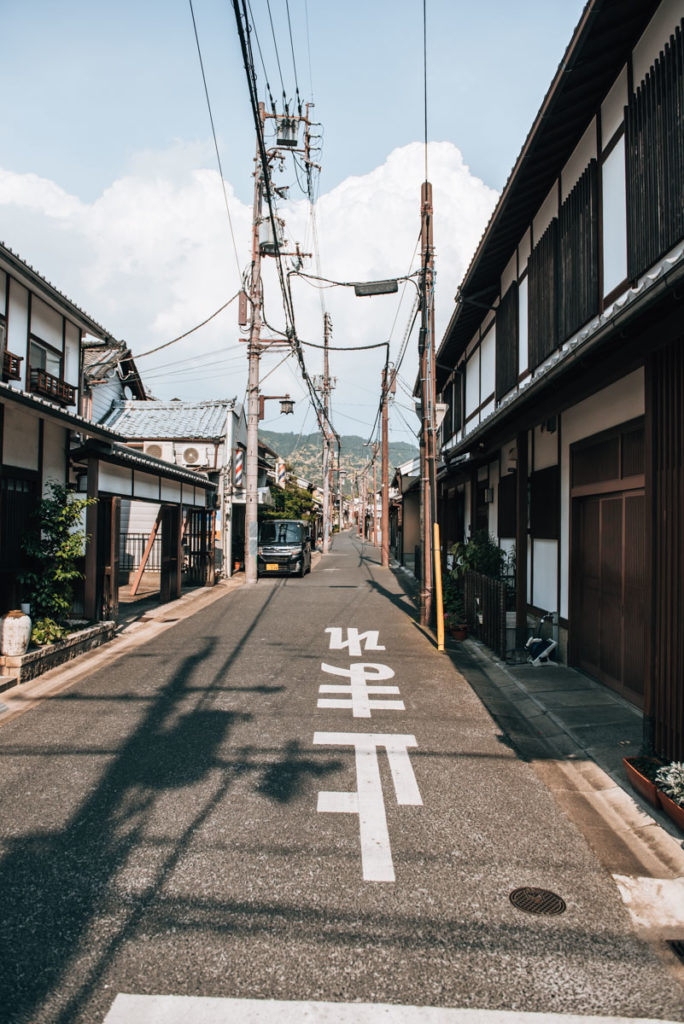
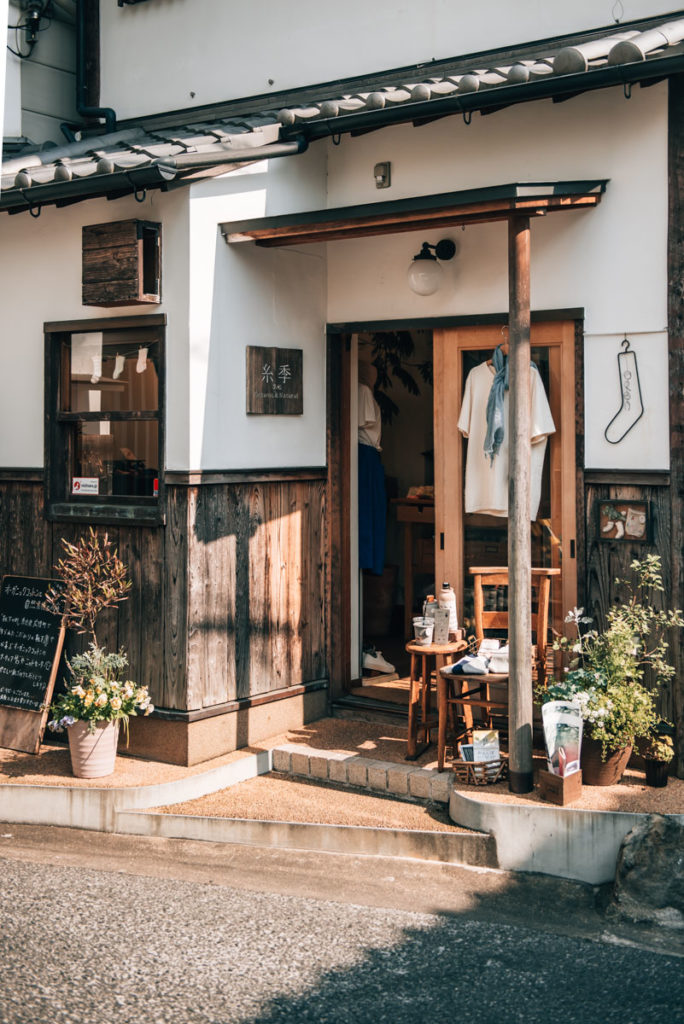
Okumura Commemorative Museum
We actually passed this place by coincidence and ended up staying for a while. The front of the door was attractively advertised with “resting place free of charge” and our tired legs were well overdue for a break.
The inconspicuous Okumura Commemorative Museum is located at the gates of the famous Tōdai-ji Temple. “Museum” is a bit exaggerated given the size of the exhibition. Although most of it is written only in Japanese, there are some sections where you can read and learn more about earthquakes and an earthquake-proof construction.
The main motive to stop by here is certainly the free tea and the quiet atmosphere. Especially because it was so hot during our visit, this stopover certainly hit the spot – we enjoyed it very much.
4. How to get to Nara
Nara has two train stations: Depending on which train you take, you will either end up at the Kintetsu Nara Station or the JR Nara Station. There is not a huge difference but the Kintetsu Nara Station is indeed a little closer to the tourist attractions (15 minutes walk to Tōdai -ji Temple).
We recommend that you check the route from your hotel (in Kyoto or Osaka) via Google Maps and, if necessary, also search for a suitable route and/or train connections via Hyperdia.
From Osaka
There are several options to get to Nara from Osaka. If you have a Japan Rail Pass (more info here: Japan Travel Tips) then you will probably take the Yamatoji Line (JR). The ride is included in the Japan Rail Pass.
A slightly faster alternative, but not covered by the Japan Rail Pass, is the Kintetsu Nara Line. As the name implies, you will get out at the Kintetsu Nara Station, which is actually somewhat closer to the Old City and attractions of Nara than the JR trains.
Our hotel tip for Osaka: Moxy Osaka


From Kyoto
If you have a Japan Rail Pass, the best way to travel from Kyoto is by the JR Train (Miyakoji Line) to Nara. Since the train ride is included in your Rail Pass, it would make more sense to avoid the slower local trains, which tend to make many intermittent stops along the way.
If you don’t have a Japan Rail Pass, then the Kintetsu Kyoto Line is the best way to go. The fastest train connection will take just 35 minutes from Kyoto to Nara. As a bonus, you can hop off at the Kintetsu Nara Station, which is actually a little closer to the tourist highlights than the JR trains.
Our hotel tip for Kyoto: The General Takatsuji Tominokoji
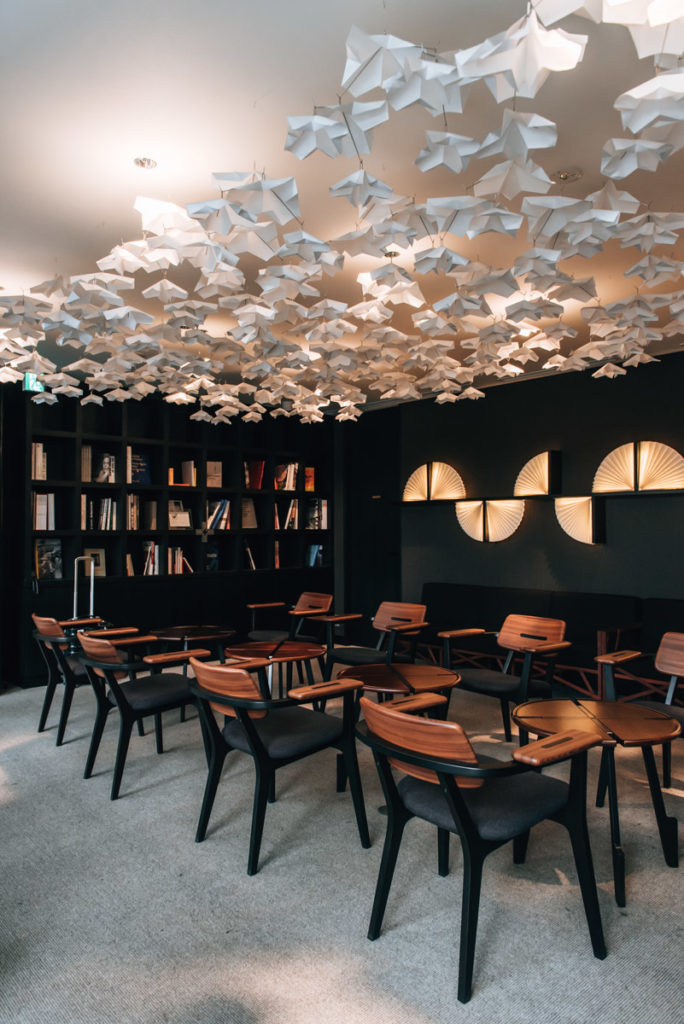

Disclaimer: Invitation & Affiliate Links
This trip to Japan was a collaborative invitation by All Nippon Airways (ANA) – thank you so much for this amazing opportunity! For full disclosure of this collaboration: ANA covered the financial costs for our return flights, plus the first five days worth of activities and accommodation (in Tokyo, Hakone, Osaka). However, we had the freedom of designing our own program and schedule. Since we were also travelling on our own the whole time, we decided to extend our stay in Japan at our own expense – after the collaboration period.
This blog article contains our personal recommendations in the form of so-called affiliate links. If you book or buy something through these links, then we will receive a small commission. For you, this does not change the price at all. A million thanks from the both of us!
Have you been to Nara before? Which temples and shrines were your highlights? Do you have any more tips for Nara? We look forward to your comments below!
